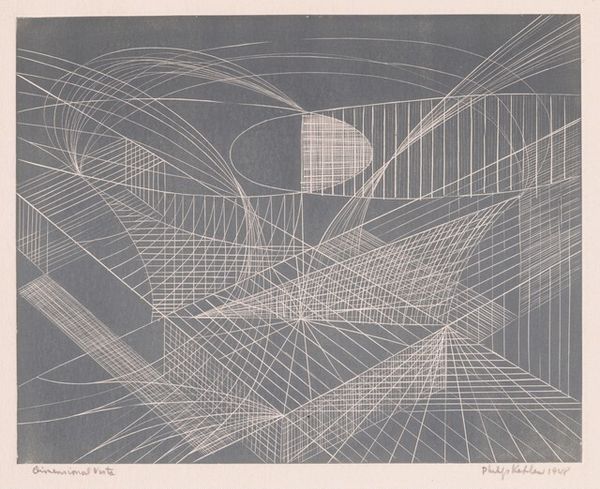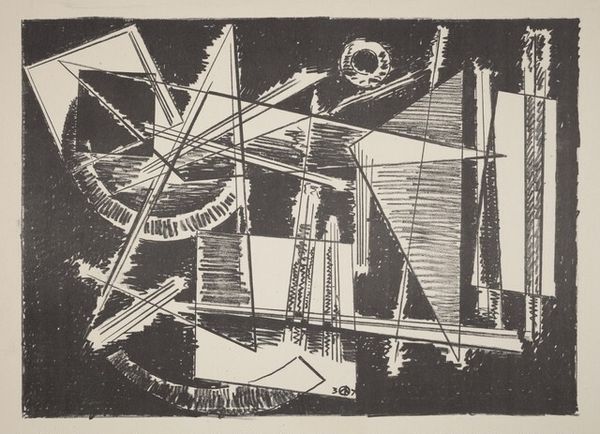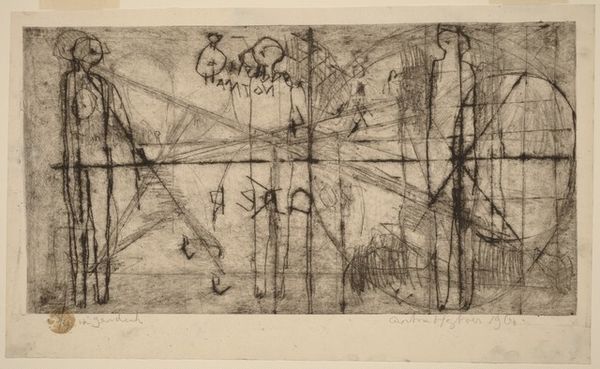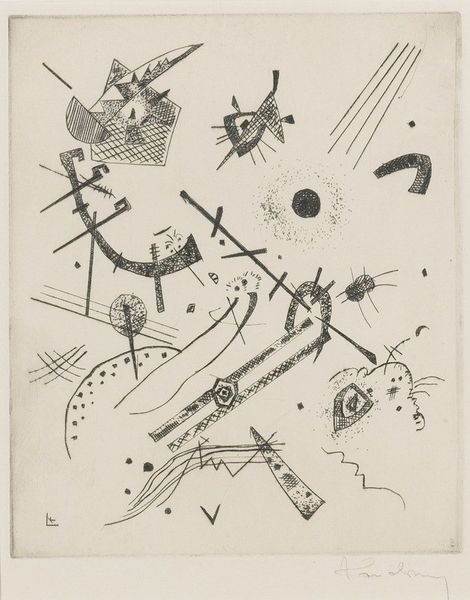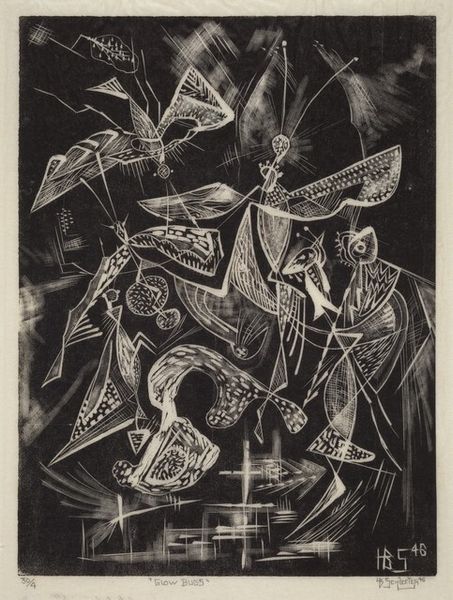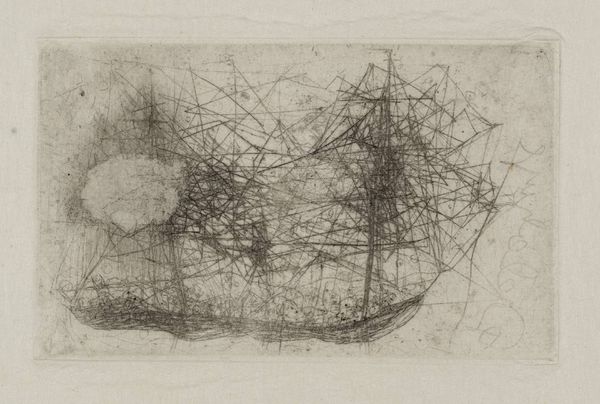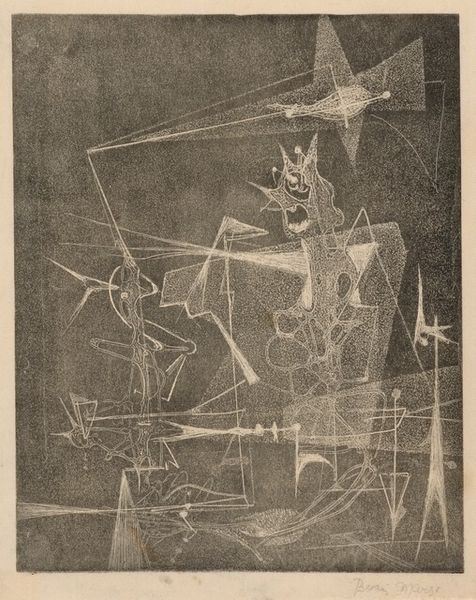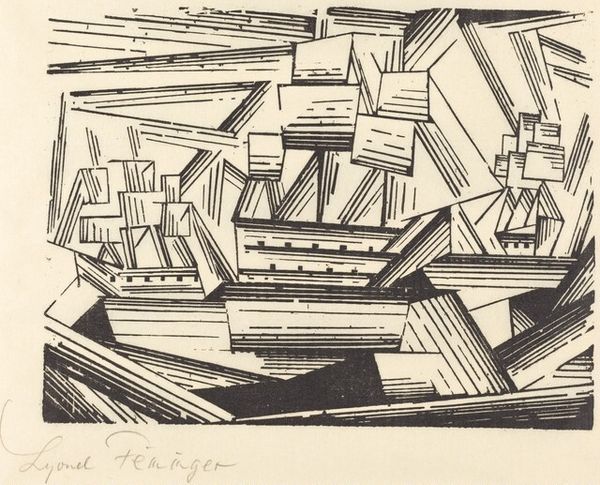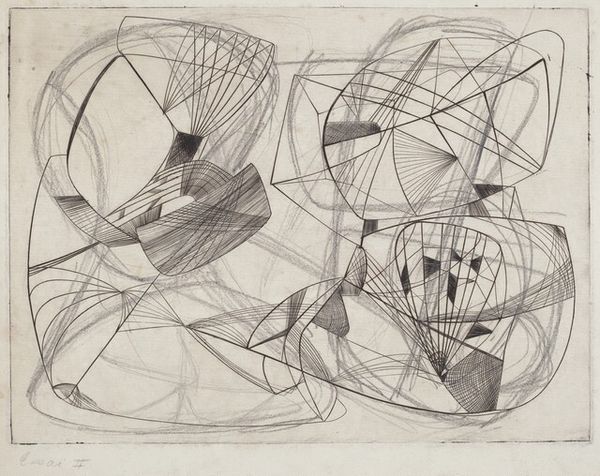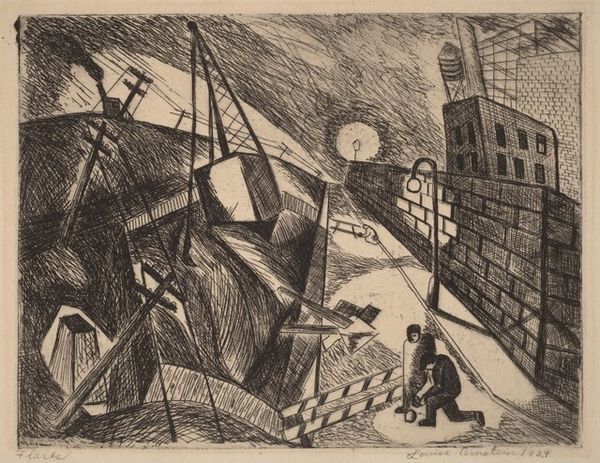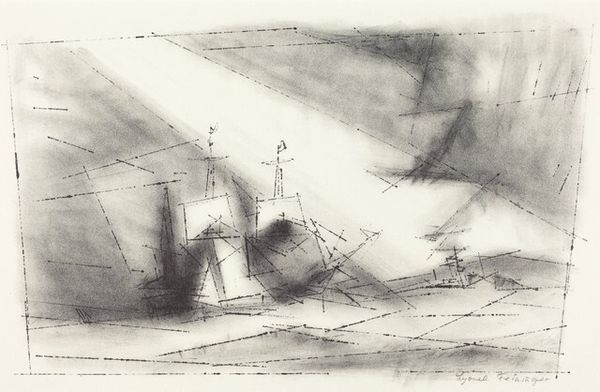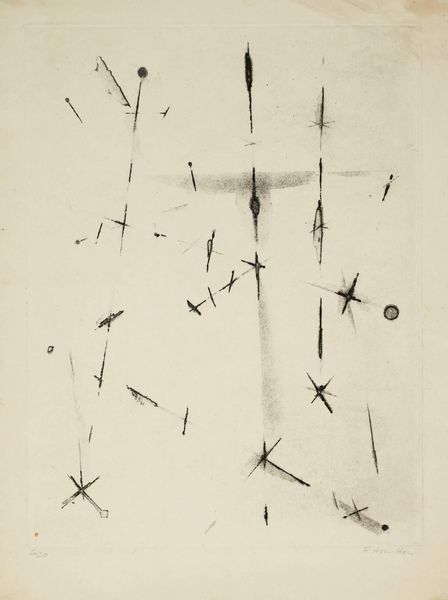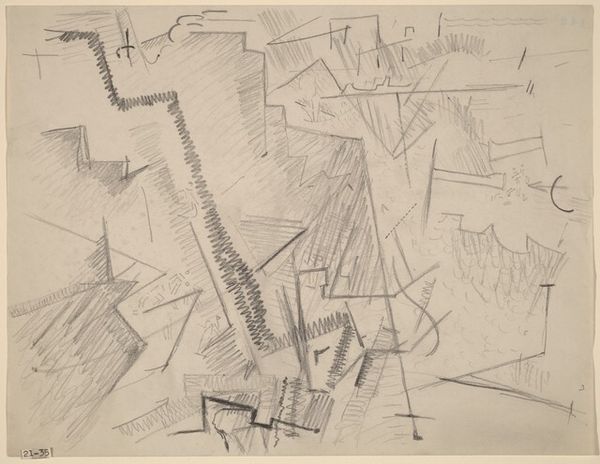
drawing, print, etching, graphite
#
abstract-expressionism
#
drawing
# print
#
etching
#
etching
#
geometric
#
abstraction
#
line
#
graphite
Dimensions: plate: 15.1 x 24.6 cm (5 15/16 x 9 11/16 in.) sheet: 40 x 55.3 cm (15 3/4 x 21 3/4 in.)
Copyright: National Gallery of Art: CC0 1.0
Editor: This is Vladimir Boudnik's "Active Graphic Sheet" from 1960. It's a graphite and etching print, and honestly, it strikes me as kind of chaotic. There's all these lines going every which way. What do you see in this piece? Curator: Chaotic, yes, but also deliberately constructed. Considering the sociopolitical landscape of 1960s Czechoslovakia under Soviet influence, this work speaks volumes. Boudnik, associated with the "Informel" movement, uses abstraction as a form of silent protest. Aren't these lines suggestive of fragmentation, perhaps a visual representation of the societal fracturing experienced during that era? Editor: Fragmentation, I hadn't thought of it that way. I was just seeing randomness. But now that you mention it, it does feel like something broken apart. Curator: And how might we understand the lack of a clear focal point? Is it an intentional rejection of centralized power, of prescribed narratives? Think about how socialist realism, the officially sanctioned art, championed easily digestible, heroic imagery. Boudnik offers the antithesis: ambiguity and dynamism. Editor: So, he's pushing back against the established artistic and political norms by creating something deliberately difficult to interpret. Curator: Precisely. The “active” element in the title hints at this refusal to be static or easily defined. What happens when we resist prescribed meanings? Boudnik seems to ask us: what new possibilities can be forged from the ruins? Editor: It's a powerful idea - using abstract art as a subtle form of resistance. Curator: And this subtlety was often necessary for survival under an oppressive regime. Considering that, does it change how you see those seemingly chaotic lines? Editor: Definitely. It adds a layer of depth I hadn't considered. I see more intention now. Curator: It's a reminder that art can be a powerful voice, even when whispering. Editor: Exactly, this makes me look at abstract art from that period in a new way. Thanks.
Comments
No comments
Be the first to comment and join the conversation on the ultimate creative platform.
